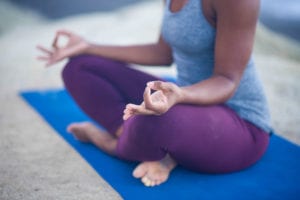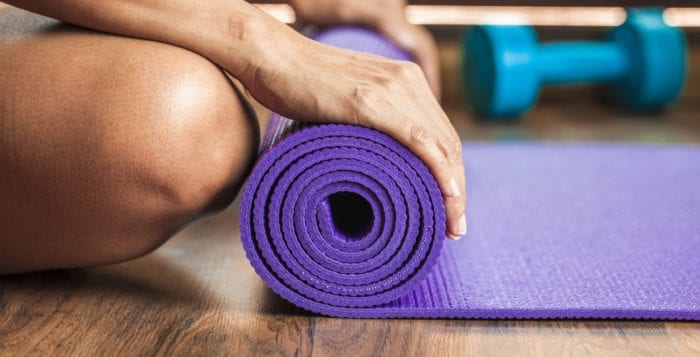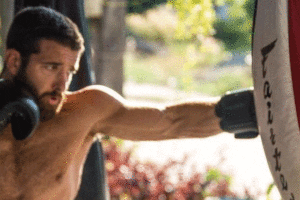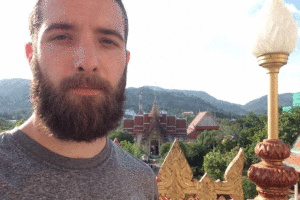Are we over- or undertreating?
By David Dunaief, M.D.

How do we protect one of our most valued assets, our infrastructure? Not roads and bridges, but our bones. When we think of bone fractures as a child or young adult, we think of short-term pain and inconvenience, but usually we recover without long-term consequences.
However, as we get older, fractures can be a lot more significant, with potentially life-altering or life-ending consequences. Osteoporosis is a silent disease that affects millions of patients, most commonly, but by no means exclusively, postmenopausal women. The trend is for low bone mass and osteoporosis diagnoses to increase by 29 percent from 2010 to 2030.
Osteoporosis is where there is bone loss, weakening of the bones and small deleterious changes in the architecture of the bone over time that may result in fractures with serious consequences (1).
One way to measure osteoporosis is with a dual-energy X-ray absorptiometry (DXA) scan for bone mineral density. Osteopenia is a slightly milder form that may be a precursor to osteoporosis. However, we should not rely on the DXA scan alone; risk factors are important, such as a family or personal history of fractures as we age. The Fracture Risk Assessment Tool (FRAX) is more thorough for determining the 10-year fracture risk. Those who have a risk of fracture that is 3 percent or more should consider treatment with medications. A link to the FRAX tool can be found at www.shef.ac.uk/FRAX.
Most of us have been told since we were young that we need more calcium to make sure we have strong bones. In fact, the National Osteoporosis Foundation recommends that we get 1,000 to 1,200 mg per day of calcium if we are over 50 years old (2). Recommendations vary by sex and age. This would be mostly from diet but also from supplements. However, the latest research suggests that calcium for osteoporosis prevention may not be as helpful as we thought.
The under/overmedication treatment paradox
Depending on the population, we could be overtreating or undertreating osteoporosis. In the elderly population that has been diagnosed with osteoporosis, there is undertreatment. One study showed that only 28 percent of patients who are candidates for osteoporosis drugs are taking the medication within the first year of diagnosis (3). The reason most were reluctant was that they had experienced a recent gastrointestinal event and did not want to induce another with osteoporosis medications, such as bisphosphonates. The data were taken from Medicare records of patients who were at least 66 years old.
On the other hand, as many as 66 percent of the women receiving osteoporosis medications may not have needed it, according to a retrospective study (4). This is the overtreatment population, with half these patients younger, between the ages of 40 and 64, and without any risk factors to indicate the need for a DXA scan. This younger population included many who had osteopenia, not osteoporosis.
Also, the DXA scan may have shown osteoporosis at what the researchers described as nonmain sites in one-third of patients diagnosed with the disease. Main sites, according to the International Society for Clinical Densitometry recommendations, would be the anterior-posterior spine, hip and femoral neck. A nonmain site in this review was the lateral lumbar spine. Before you get a DXA scan, make sure you have sufficient risk factors, such as family or personal history of fracture, age and smoking history. When the DXA scan is done, make sure it is interpreted at the main sites. If you are not sure, have another physician consult on the results.
We all need calcium to prevent osteoporosis, right?
Calcium has always been the forefront of prevention and treatment of osteoporosis. However, two studies would have us question this approach. Results of one meta-analysis of a group of 59 randomized controlled trials showed that dietary calcium and calcium supplements with or without vitamin D did increase the bone density significantly in most places in the body, including the femoral neck, spine and hip (5). Yet the changes were so small that they would not have much clinical benefit in terms of fracture prevention.
Another meta-analysis of a group of 44 observational dietary trials and 26 randomized controlled trials did not show a benefit with dietary or supplemental calcium with or without vitamin D (6). There was a slight reduction in nonsignificant vertebral fractures, but not in other places, such as the hip and forearm. Dietary calcium and supplements disappointed in these two trials.
Does this mean calcium is not useful? Not so fast!
In some individual studies that were part of the meta-analyses, the researchers mentioned that dairy, specifically milk, was the dietary source on record, and we know milk is not necessarily good for bones. But in many of the studies, the researcher did not differentiate between the sources of dietary calcium. This is a very important nuance. Calcium from animal products may increase inflammation and the acidity of the body and may actually leach calcium from the bone, while calcium from vegetable-rich, nutrient-dense sources may be better absorbed, providing more of an alkaline and anti-inflammatory approach. This would be a good follow-up study, comparing the effects of calcium from animal and plant-based dietary sources.
What can be done to improve the situation?

Yoga used to be on the fringe of society. Now, it has become more prevalent and part of mainstream exercise. This is a good trend since this type of exercise may have a big impact on prevention and treatment of osteoporosis. In a small pilot study, the results showed that those who practiced yoga had an increase in their spine and hip bone density compared to those who did not (7). There were 18 participants in this trial.
The researchers were encouraged by these results, so they increased the number of participants in another study. The results showed that 12 minutes of yoga daily or every other day significantly increased the bone density from the start of the study in both the spine and femur, the thigh bone (8). There was also an increase in hip bone density, but this was not significant. The strength of the study includes its 10-year duration. However, one weakness was that this trial did not include a control group.
Another was that 741 participants started the trial, but only 227 finished, less than one-third. Of those, 202 were women. Significantly, prior to the study there were 109 fractures in the participants, most of whom had osteoporosis or osteopenia, but none had yoga-related fractures by the end of the trial. The “side effects” of yoga include improved mobility, posture, strength and a reduction in anxiety. The researchers gave a nice road map of specific beneficial poses. Before starting a program, consult your doctor.
The moral of the story is that exercise is beneficial. Yoga may be another simple addition to this exercise regimen. Calcium may be good or bad, depending on its dietary source. Be cautious with supplemental calcium; it does have side effects, including kidney stones, cardiovascular events and gastrointestinal symptoms, and consult with your doctor to assess whether you might be in an overtreatment or undertreatment group when it comes to medication.
References: (1) uptodate.com. (2) nof.org. (3) Clin Interv Aging. 2015;10:1813-1824. (4) JAMA Intern Med. online Jan. 4, 2016. (5) BMJ 2015; 351:h4183. (6) BMJ 2015; 351:h4580. (7) Top Geriatr Rehabil. 2009; 25(3); 244-250. (8) Top Geriatr Rehabil. 2016; 32(2); 81-87.
Dr. Dunaief is a speaker, author and local lifestyle medicine physician focusing on the integration of medicine, nutrition, fitness and stress management. For further information, visit www.medicalcompassmd.com or consult your personal physician.








